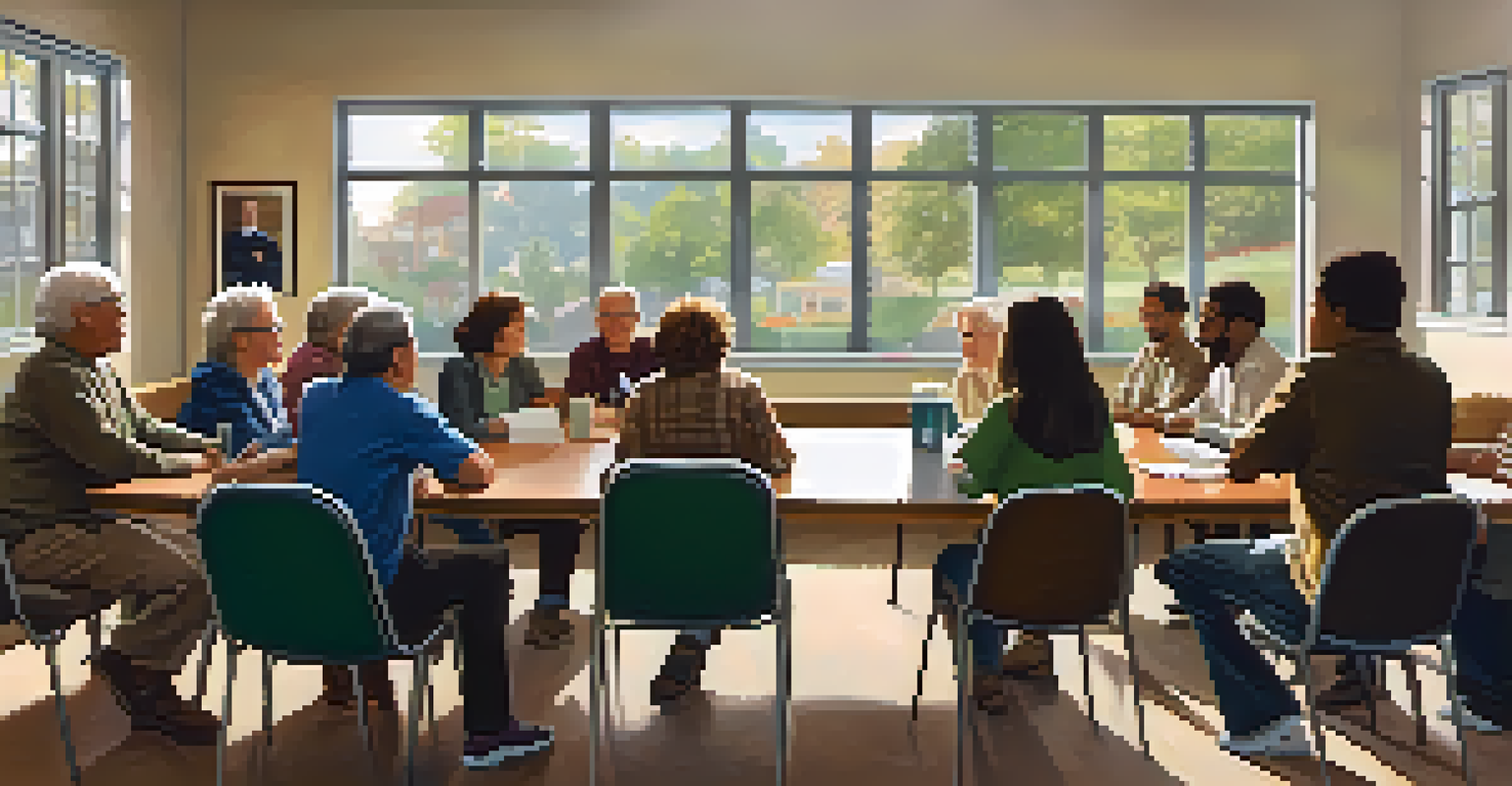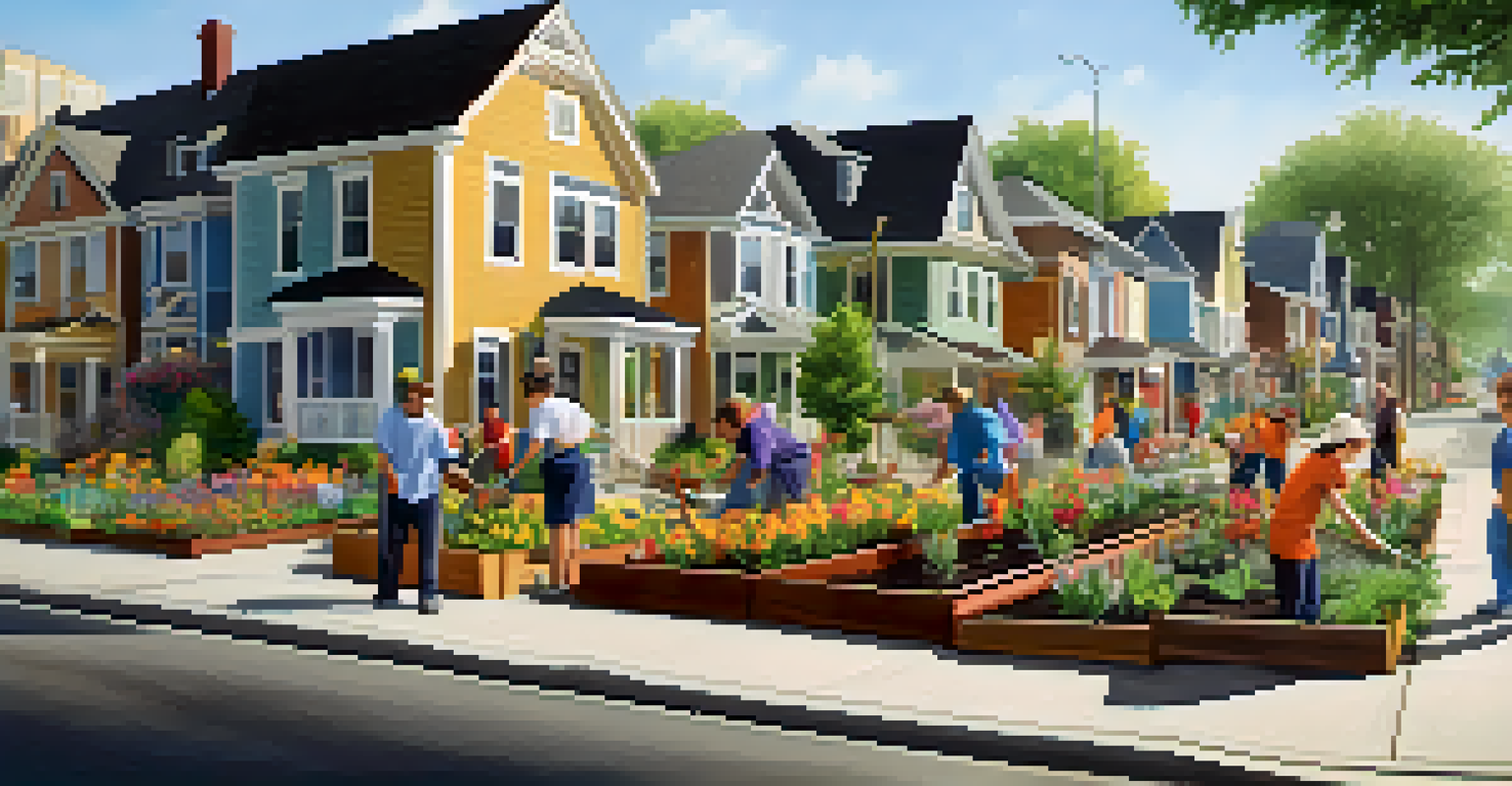Neighborhood Associations: A Path to Active Civic Participation

What Are Neighborhood Associations and Their Purpose?
Neighborhood associations are groups formed by residents to address local issues and enhance community living. They serve as a platform for neighbors to voice concerns, share resources, and collaborate on projects that benefit everyone. Think of them as a bridge connecting residents with local governance, making civic engagement more accessible.
Alone we can do so little; together we can do so much.
These associations often focus on improving neighborhood safety, organizing events, and advocating for local services. They can range from small, informal groups to larger, structured organizations with formal bylaws. Regardless of size, their primary aim is to strengthen community bonds and empower residents.
By participating in a neighborhood association, residents can influence decisions that affect their daily lives, from zoning laws to public safety measures. It’s a chance to be heard and to play an active role in shaping the community’s future.
The Benefits of Joining a Neighborhood Association
Joining a neighborhood association opens the door to a variety of benefits, both personal and communal. For instance, it fosters a sense of belonging, as residents come together to share their interests and concerns. This camaraderie can lead to lasting friendships and a more supportive environment.

Additionally, associations often provide valuable resources such as workshops, newsletters, and community events. These resources can keep residents informed and engaged, offering opportunities to learn about local issues and how to address them effectively. Imagine attending a workshop on home safety or participating in a community cleanup event—these experiences can be both enriching and fulfilling.
Empowerment Through Community Voice
Neighborhood associations allow residents to actively influence local decisions and advocate for their community's needs.
Moreover, being part of an association amplifies your voice in local governance. Members often collaborate on initiatives that are presented to local officials, ensuring that their collective concerns are heard. This active participation can lead to tangible improvements in the neighborhood.
How to Start a Neighborhood Association
Starting a neighborhood association might seem daunting, but it can be a rewarding endeavor. Begin by gathering interested neighbors for an informal meeting to discuss common goals and concerns. This initial gathering can help gauge interest and establish a sense of community spirit right from the start.
The greatness of a community is most accurately measured by the compassionate actions of its members.
Next, create a structure for your association. This could include defining roles such as president, secretary, and treasurer, and outlining how decisions will be made. Drafting a set of bylaws can provide clarity and help guide the association’s activities, ensuring that everyone is on the same page.
Finally, promote your association through flyers, social media, or local events to attract more members. The more diverse the membership, the more perspectives and ideas will enrich the discussions and initiatives. Remember, the goal is to foster a sense of belonging and encourage active participation.
Engaging Residents: Tips for Effective Participation
Encouraging active participation in a neighborhood association requires thoughtful strategies. Make meetings engaging and accessible by offering different formats, such as casual meet-ups or formal discussions. Using a variety of communication channels, like social media or newsletters, can also help reach a broader audience.
Incorporating fun activities, like potlucks or community games, can break the ice and spark interest among residents. These events not only build relationships but also provide a platform for discussing important issues in a relaxed environment. After all, who doesn’t enjoy a good barbecue while discussing community plans?
Strength in Collaboration
Working together on projects fosters a sense of pride and camaraderie, leading to tangible improvements in the neighborhood.
Lastly, recognize and celebrate contributions from residents. Whether it’s acknowledging a neighbor’s efforts in organizing an event or highlighting community achievements, showing appreciation fosters a positive atmosphere. This recognition encourages continued involvement and strengthens the association’s foundation.
Building Stronger Communities Through Collaboration
Collaboration is at the heart of successful neighborhood associations. By working together, residents can tackle larger issues that impact the entire community, such as crime prevention or beautification projects. Think of it as a team effort where everyone’s strengths contribute to a common goal.
Forming partnerships with local businesses, schools, and government agencies can also enhance the impact of the association. These collaborations can bring in additional resources, expertise, and funding for community initiatives. For example, a partnership with a local school could lead to shared events that engage families and promote education.
Moreover, collaborative efforts can create a sense of pride within the community. When residents see the tangible results of working together, it reinforces the importance of civic engagement and inspires others to join. Together, they can create a vibrant, thriving neighborhood.
The Role of Technology in Neighborhood Associations
In today’s digital age, technology plays a vital role in enhancing neighborhood associations. Online platforms can facilitate communication, allowing members to connect, share updates, and organize events effortlessly. Imagine having a dedicated website or social media group where residents can post questions, share news, and stay informed.
Additionally, technology can streamline administrative tasks, such as managing memberships and finances. Tools like Google Forms for surveys or platforms like Meetup for event planning can simplify coordination and increase participation. This ease of use can attract more residents to join and contribute.
Leveraging Technology for Engagement
Utilizing online tools enhances communication and participation, making it easier for residents to stay informed and involved.
However, it's important to ensure that technology is accessible to all members of the community. Balancing digital tools with in-person interactions ensures that everyone feels included, regardless of their comfort level with technology. By embracing both methods, associations can foster a more engaged and informed community.
Overcoming Challenges in Neighborhood Associations
Like any organization, neighborhood associations can face challenges, from low participation to conflicts among members. Addressing these issues requires open communication and a willingness to adapt. Encouraging feedback and suggestions can help identify concerns and foster a collaborative atmosphere.
Another common challenge is sustaining enthusiasm over time. To keep momentum going, it’s essential to regularly highlight the association’s successes and the positive impact of members’ contributions. Sharing stories of community improvement can reignite passion and inspire ongoing involvement.

Lastly, flexibility is key. As community dynamics change, associations must be willing to evolve. Whether it’s adjusting meeting formats to accommodate busy schedules or addressing new issues as they arise, staying responsive to the needs of the community will ensure the association remains relevant and effective.